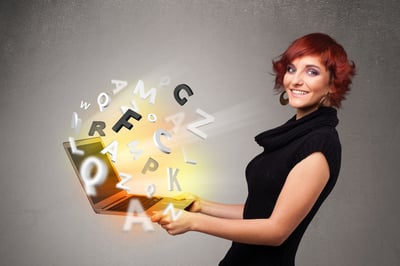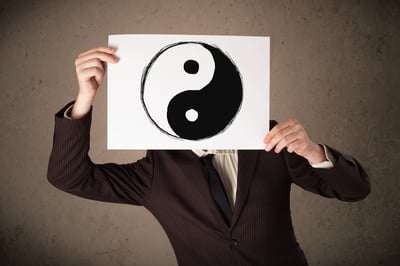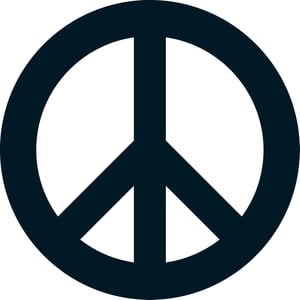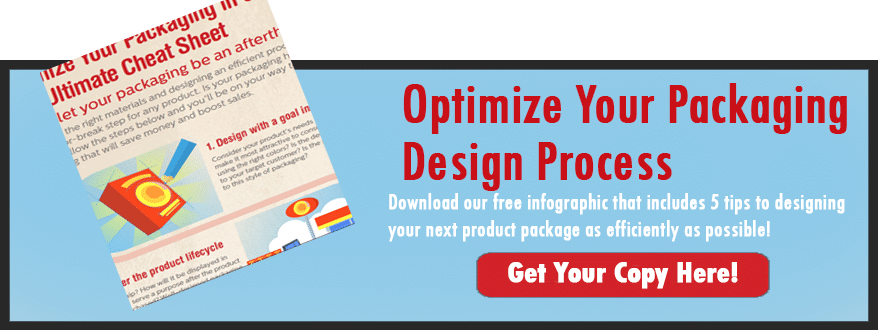How To Evoke Positve Emotions With Packaging
Packaging Materials | Packaging Design | Packaging Psychology
In a world with so many advertisements, marketing messages, and distractions, it is not easy to gain the attention of consumers.
And, if you do, there is no guarantee that they will purchase your product after inspecting it. But how do you turn a consumer from a prospect into a customer?
One way to accomplish this goal is to leverage packaging materials as an emotional catalyst.
If you can get people to feel positive emotions, you may be able to use those emotions to instigate a purchase.
This article will explore some of the top ways to evoke positive emotional reactions from consumers with packaging in ways that can drive better sales.
With the information in this article, you will be able to leverage the power of emotional evocation as a tool to help bring in new revenue.

What Is Evocation And How Does It Relate To Packaging?
In the long-forgotten annals of history, the traditional definition of evocation is the calling forth of spirits or deities. As we don’t want to use packaging to generate any unwanted supernatural events, we will be discussing this term in relation to its modern definition, which is:
“the act of bringing or recalling a feeling, memory, or image to the conscious mind.”
Profound in its own way, yes? With that description in mind, we can begin to understand how the art of evocation could be helpful in the branding and design of your packaging materials.
I mean, after all, if a company’s packaging materials were to induce positive memories or feelings in you, wouldn't that motivate you to choose their products over another brand that makes you feel nothing?
But, how can we evoke the emotions we wish to instill in prospective customers with packaging materials?
The section below will discuss the most powerful ways to achieve these lofty goals.

1. Packaging Typography
“Words are, in my not-so-humble opinion, our most inexhaustible source of magic. Capable of both inflicting injury and remedying it.” – Albus Dumbledore
While these words come from a fictional character within the Harry Potter universe, I must admit that few things have rung truer in my own life.
Words alone have an incredible power to build people up and make them happy or tear them down and cause them sadness, anger, and other negative emotions.
And the way in which we present words to those people whom we wish to become our customers is equally important.
While you may have the proper textual message to evoke a positive emotion from your packaging design and branding, you may fail to bring forth those emotions if you choose the wrong font.
In this respect, it is essential to experiment with A/B tests of different typography when possible. If you cannot afford to run several different typographical designs, you will want to find another way to see what fonts resonate best with your customers.
This could be done by sending out an email to your customers and prospects asking which fonts they like best. Or you could poll your social media followers on their favorite fonts. You could also collect similar data from another source.
By engaging your prospects and customers and taking their feedback on which design elements are most appealing to them, you can better evoke the positive emotions required to instigate a purchase.
Once you have identified which fonts are most popular with your prospects and customers, you can design or redesign your packaging to feature those fonts more prominently.
Need help designing your packaging?

2. Packaging Symbology
A picture is worth a thousand words. Or so they say. I have certainly come to find that to be true. And symbols are, in their own way, pictures.
Symbols may contain a large amount of information that you could not suggest otherwise. This is why symbology is an easy way to evoke positive emotions without using an excess of words.
But how can we use symbology on our packaging materials to bring forth the positive feelings we hope to manifest?
World-renowned analytical psychologist Carl Jung explained the differences between signs and symbols in his book Analytical Psychology (Jung 1921, pp. 473-5).
To simplify the ideas found there, we will explain his words in an easier-to-digest example, as presented below:
A sign is a guide or pointer to something we already know. For example, the Burger King logo suggests a particular type of restaurant. In contrast, the star buck’s logo represents a specific type of coffee shop.
From this perspective, we understand that the two examples above are signs. Conversely, it should be known that symbols are a pictogram suggesting knowledge of a mystery or something unknown.

For example, think of the peace sign. The rock and roll culture of the 1960s brought the rise of a counter-culture. And with it, the sign above.
Today, pretty much everyone knows what this symbol means. But, at the time of its inception, only those who were part of the rock and roll counter culture knew what it meant.
The majority of those people who were not part of this sub-culture during that time did not know what the symbol represented. Unless, of course, they were brought "into the know" by someone who understood its meaning.
In this respect, we can see how using symbols as a special communication to insiders (dedicated customers or fans of your brand) is another way to evoke positive emotions.
But, what exactly would that look like in regard to packaging materials? From a branding point of view, there could be various ways in which symbology may be used for such ends.
Say that you want to build a community out of your customers, prospects, and social media followers in an attempt to sell more products.
You could accomplish this in various ways. For example, you could invite your customers, prospects, and social media followers to sign up for a paid monthly service that provides significant discounts exclusively to members of the paid service.
By requiring them to submit their email or set up an account to access these exclusive offers, you have made them part of a community of users who have access to certain things other clients of yours do not.
By adding a symbol of your own design to all the branded materials related to this exclusive experience, you can help to facilitate a more profound sense of community while making people feel special about being “on the inside.”
In addition, you can add this symbol with a QR code or website URL directly onto your packaging materials inviting consumers to scan or visit for exclusive discounts.
If you can do this successfully, and you are able to delight the members of the group, chances are, they will tell their friends and family about the service, and your “fan base” will grow.
The more people who join the community through positive user experiences, the more the symbolic representation of the group you have created will be associated with those positive feelings.
And, with the growth of a happy community that revolves around discounted products, you can expect a growth in sales to go with it.

3. User-Generated Content
Finally, we come to user-generated content. In my experience, there is no better way to generate positive emotional experiences than getting your customers, prospects, and social media followers (your communities) to produce content for you.
And when you provide exciting, fun, and unique ways that people can contribute to your content production, they will gladly show up.
To illustrate this, I would point you to a previous marketing campaign in which I brought international brand awareness and new revenue streams to my previous company, which was an office equipment dealer.
We sold copiers, fax machines, printers, wide-format devices, document management solutions, and managed print services.
To generate more sales for the items above, I created what I called “The Destroy Your Printer Contest”. The concept was simple.
We would invite people through social media to destroy a printer from their office humorously and creatively.
An internal group of corporate employees would judge the videos. The winner would receive a couple of hundred dollars sent to a charity of their choice and a free toner set for their new printer.
The contest, which ran for 5 years, brought hilarious video submissions from around the country and resulted in a massive organic viral social media campaign.
Ultimately this led to the contest being featured in multiple best-selling marketing books, industry magazines, and finally, The New York Times.
The massive exposure from the contest (which, by the way, had a marketing budget of zero dollars) led me into meetings with several local corporations which signed annual contracts for machinery and supplies.
I even ended up selling a printer to a new client directly through Twitter after these events took place!
Now, I was given all sorts of accolades for this project. Still, the truth is, the real stars were our customers, prospects, and social media followers who entered the contest and produced the content for us!
You may be wondering, how could you do this with your packaging materials? The possibilities are endless in today’s hyper-connected world with social media outlets such as Instagram and Tik-Tok.
For example, let’s say you are a candy company looking to boost sales of specific products. You could easily drum up a massive viral marketing campaign by parodying the golden ticket theme from one particularly famous movie about a boy named Charles and a guy who owned a candy factory.
Or perhaps you could run a recycling campaign where you have people submit videos of them properly recycling your packaging materials. Whoever recycles the most items by the end of the contest could win a prize!
Again, the possibilities are endless.
But, the fact remains, user-generated content is one of the absolute best ways to evoke positive emotional responses from your prospects, customers, and related communities.
And with that being said, we would love to see what type of user-generated content you may be interested in creating in tandem with Industrial Packaging!
Please consider reaching out to us on Linkedin, Twitter, or Facebook. We would love to hear your ideas for the types of content you would be interested in creating together.
How Can Evoking Positive Emotional Experiences Through Packaging Benefit Your Business?
This post was a bit in-depth, but it only scratched the surface of what is possible within the realm of positively charged experiences created through engaging packaging techniques.
Would you like to learn more about using packaging to generate positive experiences for your customers?
If you would, then you will want to consider reading this follow-up article, What Is Interactive Packaging?
This article will provide you with more ideas on how to engage your audience with positive experiences generated through interactive packaging materials.
About Nathan Dube
As the Digital Marketing Specialist at Industrial Packaging, I am honored to create content for such a phenomenal company and work with one of the greatest teams in the Packaging Industry. Whether creating a video, writing blog posts or generating other pieces of content and multimedia, I am always excited to help educate and inspire our prospects and clients to reach their highest potential in regards to their packaging processes and needs.




